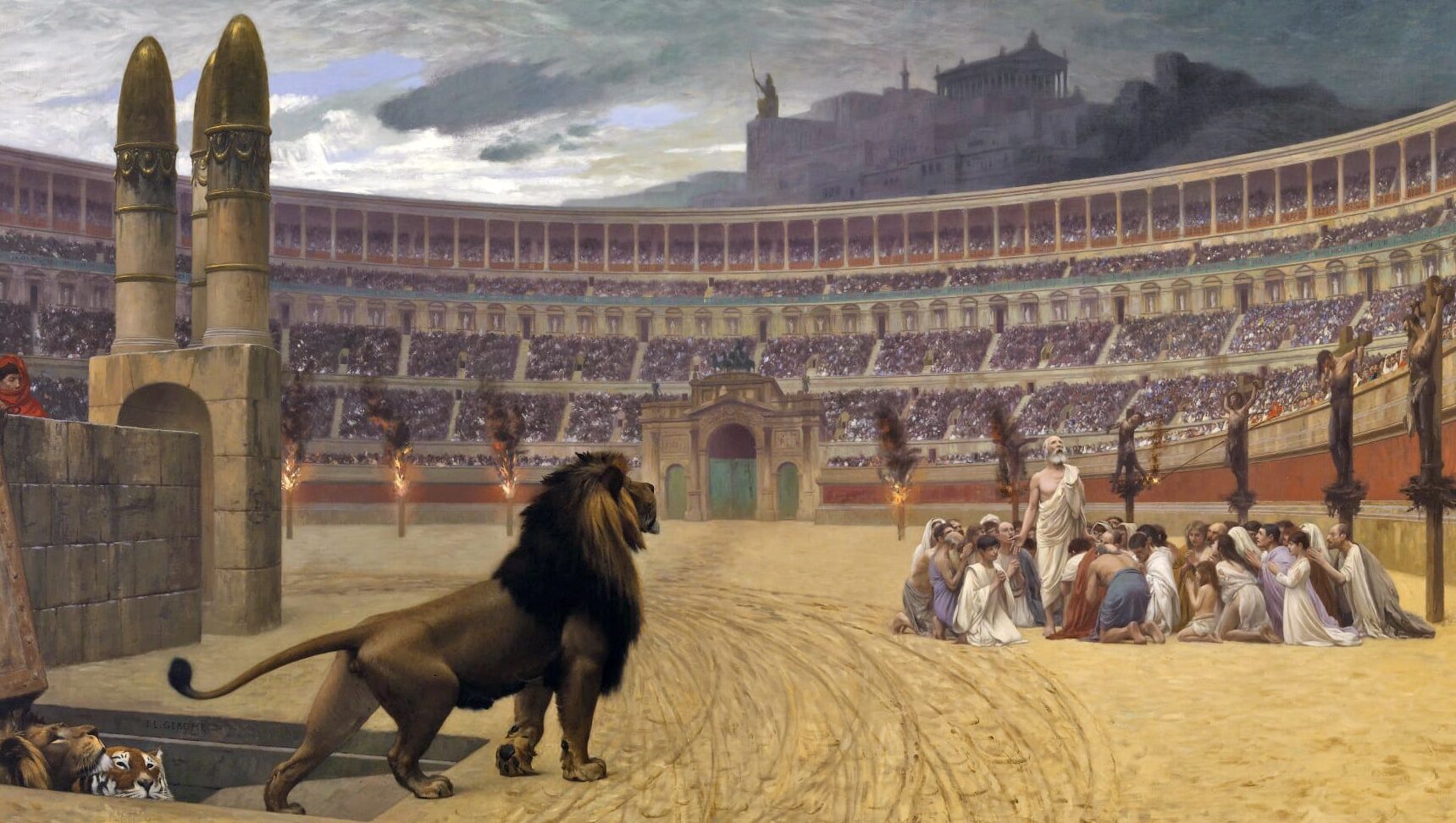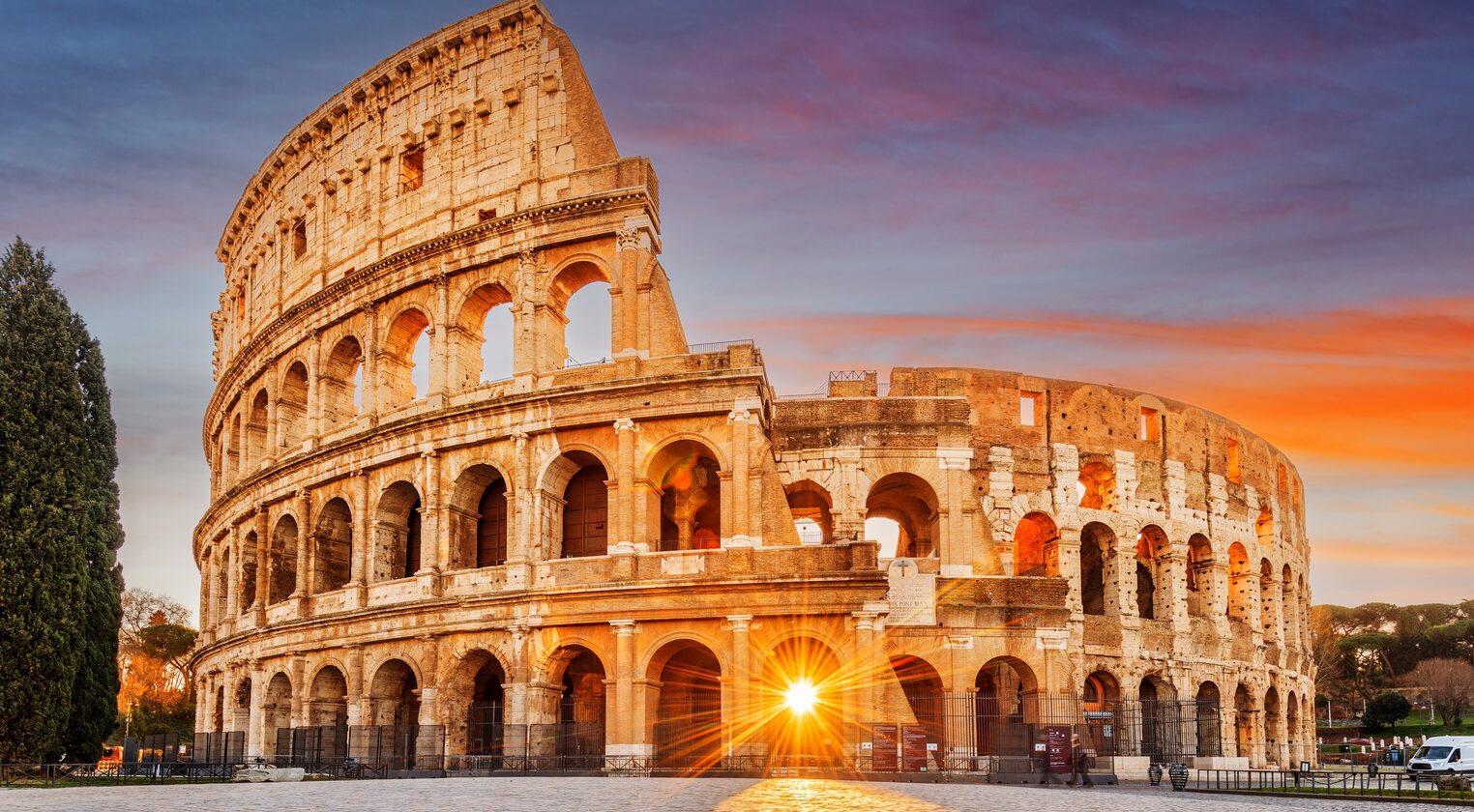The Colosseum, also known as the Flavian Amphitheatre, is one of the most iconic landmarks in the world. Built between 70 and 72 CE, this famous Roman amphitheater holds great historical significance. It was constructed by the emperors Vespasian and Titus on the site of the Golden House of Nero. The Colosseum was a place of entertainment and spectacle, where Roman citizens gathered to watch gladiatorial contests, animal hunts, and other public spectacles. This architectural marvel stands as a testament to the grandeur and engineering prowess of ancient Rome. It continues to captivate visitors from around the globe with its rich history and impressive structure.
The Colosseum holds immense importance as a symbol of ancient Roman civilization. It is a representation of the power, wealth, and cultural achievements of the Roman Empire. This grand amphitheater was a manifestation of the Roman love for entertainment and their ability to construct monumental structures. The Colosseum has come to symbolize the strength and endurance of Rome throughout the ages. It stands as a reminder of the glory days of the Roman Empire and the cultural legacy it has left behind.
Today, the Colosseum stands as a popular tourist attraction, drawing millions of visitors each year. It offers a glimpse into the rich history and architectural brilliance of ancient Rome. Visitors can explore the various levels of the Colosseum, imagining the grand spectacles that once took place within its walls. Guided tours provide in-depth insights into the history and significance of this iconic landmark. The Colosseum’s enduring popularity is a testament to its timeless appeal and the fascination it continues to evoke in people from all walks of life.
Historical background of the Colosseum
The Colosseum, also known as the Flavian Amphitheater, is a remarkable architectural monument that stands as one of the greatest feats of Roman architecture. Built between 70 and 72 CE, this iconic landmark showcases the ingenuity and engineering skills of the time.

The Colosseum is the largest Roman amphitheater in the world and continues to captivate visitors with its grandeur and historical significance. Its elliptical shape and impressive size make it a true marvel of ancient Roman architecture. Every year, millions of people from around the world visit the Colosseum to witness its magnificence firsthand.
During ancient times, the Colosseum served various purposes and functions. It was primarily used for gladiatorial contests, where trained fighters would battle each other or wild animals for the entertainment of the Roman citizens. These spectacles were a popular form of entertainment and a way for emperors to demonstrate their power and generosity to the people. The Colosseum also hosted other events such as mock naval battles, animal hunts, and public executions. It was a center of social and cultural life in ancient Rome, attracting large crowds and creating a sense of community.
The Colosseum is renowned for the notable events and spectacles that were held within its walls. It witnessed countless gladiatorial fights, where skilled fighters showcased their combat skills and bravery. The amphitheater also played host to elaborate reenactments of famous battles and mythological scenes. These events were not only sources of entertainment but also served as a way to reinforce Roman values and ideals. Today, the Colosseum stands as a symbol of ancient Rome’s grandeur and continues to captivate visitors with its rich history and architectural brilliance.
Exploring the Colosseum today
The Colosseum, also known as the Flavian Amphitheatre, is one of the most iconic landmarks in the world and attracts over six million visitors every year. This remarkable monument, dating back to the Roman Empire, is considered one of the best-preserved ruins from that era. Located in the Historic Centre of Rome, a UNESCO World Heritage site, the Colosseum holds immense historical and cultural significance. As one of the most popular tourist attractions in Rome, it offers a range of tourist facilities and services to accommodate the large number of visitors it receives. From guided tours to skip-the-line options, there are various ways to explore this magnificent structure and make the most of your visit.
A visit to the Colosseum is an opportunity to witness the grandeur of ancient Roman architecture and learn about its historical importance. The Colosseum’s impressive size and architectural details, such as its arches and columns, leave visitors in awe. Inside, you can explore the different levels and imagine the gladiatorial contests and spectacles that once took place in this iconic arena.
The Colosseum also offers breathtaking views of Rome from its upper levels, allowing visitors to appreciate the city’s beauty from a unique perspective. Whether you’re interested in history, architecture, or simply capturing stunning photographs, a visit to the Colosseum is a must-do experience.
To enhance your understanding of the Colosseum’s historical and cultural significance, it is highly recommended to take a guided tour. Knowledgeable guides can provide valuable insights into the history, architecture, and stories behind this ancient amphitheater. They can bring the ruins to life and help you appreciate the significance of this iconic landmark. Guided tours often include access to restricted areas, such as the underground chambers and the arena floor, providing a more immersive experience. With the guidance of an expert, you can gain a deeper understanding of the Colosseum’s historical context and the impact it had on ancient Roman society. Don’t miss out on this unforgettable opportunity to explore one of the most iconic landmarks in the world.
Impact and legacy of the Colosseum
The Colosseum, also known as the Flavian Amphitheater, has had a profound influence on architecture and engineering throughout history. It is considered one of the greatest feats of Roman architecture and engineering, showcasing the achievements of the ancient Romans.

The Colosseum stands as a testament to their advanced construction techniques and innovative design. As the largest Roman amphitheater in the world, it continues to awe visitors with its grandeur and magnificence. Despite the passage of time and various damages, the Colosseum remains a remarkable example of ancient Roman architecture, captivating the imagination of those who visit it. Its iconic status as a symbol of power, genius, and brutality of the Roman Empire is widely recognized.
The cultural significance of the Colosseum extends beyond its architectural and engineering marvels. It has become a symbol of ancient Rome and is often represented in popular media, including movies, books, and artwork. The Colosseum’s association with gladiatorial contests and other spectacles has made it an enduring symbol of entertainment, strength, and endurance. Its iconic status has made it one of Rome’s most popular tourist attractions, attracting millions of visitors each year. The Colosseum’s rich history and bloody past have made it a subject of fascination and intrigue, further perpetuating its cultural significance. Its presence in popular media continues to inspire and captivate audiences around the world.
The preservation of the Colosseum has been a priority for both the Roman Church and the Italian government. Numerous restoration projects have been undertaken to ensure its preservation for future generations. In the 19th century, restoration efforts led by the Roman Church, the city, and the government were launched to preserve this iconic monument.
These ongoing restoration projects aim to maintain the structural integrity of the Colosseum and protect it from further deterioration. Despite the challenges posed by time and environmental factors, the Colosseum stands as a testament to the dedication and commitment to preserving the world’s cultural heritage. Its preservation efforts ensure that visitors can continue to experience the awe-inspiring beauty and historical significance of this ancient landmark.